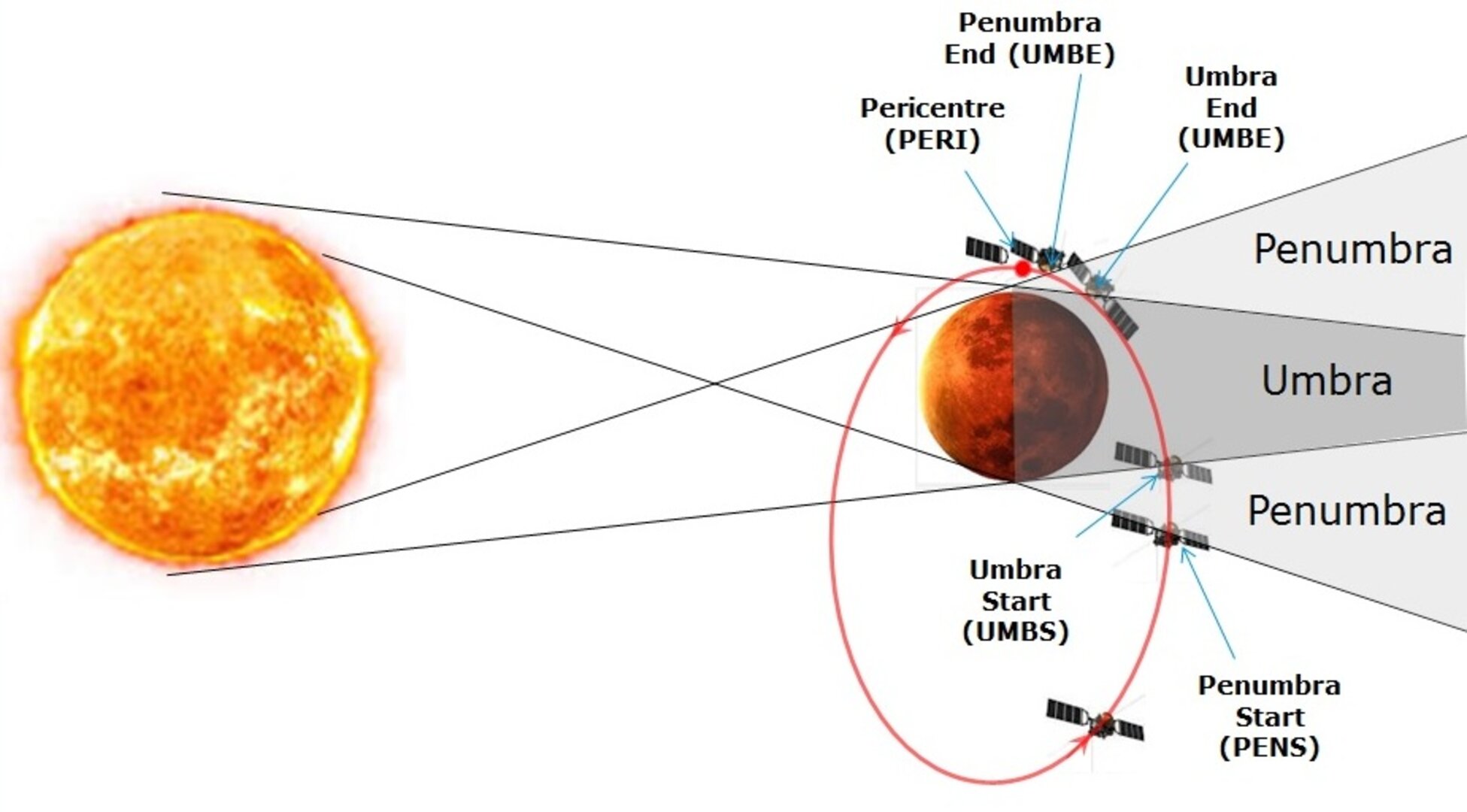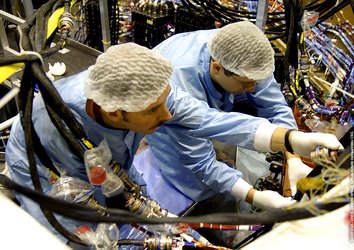

Eclipses in Mars orbit
Whenever Mars Express is in sunlight then its solar arrays are able to generate power. As the spacecraft enters Mars’ shadow on the far side of the planet from the Sun, no sunlight falls on the arrays so all power is provided by its batteries.
Once Mars Express exits the shadow (umbra) then its solar arrays are again able to provide power to MEX and to recharge its batteries before the next eclipse. During an eclipse, power for all spacecraft activities is provided by these batteries. A balance must therefore be struck between the battery power available and the power used by the spacecraft.
The vacuum of space is a challenging thermal environment. The illuminated side of an object may reach upwards of 250°C while the non-illuminated side may be sink as low as 150°C. Maintaining a safe thermal environment is the task of the thermal subsystem, which uses heaters where needed to keep the spacecraft warm. This heater power demand varies throughout the Martian year. Balancing this power budget with varying thermal power demand and aging batteries whose capacity is decreasing is not a straightforward task, but it must be achieved to maintain spacecraft health and pursue scientific opportunities.





